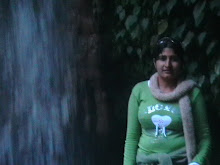 Interesting facts about Fingerprints
Interesting facts about Fingerprints - As many have already known this fact about fingerprints, it is interesting to consider reiterating the fact that there are absolutely NO identical fingerprints. It is said that the ridges that form largely of our prints develops as early as in the first few weeks of the fetus stages and each is individually develop that even an identical twin doesn’t posses the same fingerprints;
- It is possible that relatives do have same fingerprint patterns;
- You can outgrow your shoes but not your prints as they will stay the same no matter how old you are;
- In order to seal or close their business transactions, ancient Babylonians used fingerprints in their tablets;
- Brothers Alfred and Albert Stratton of 1905 were the first victims of fingerprinting evidence. They were convicted of murder;
- Fingerprints are considered to be the very basis of criminal history of every police agency;
- Fingerprints are believed to have outnumbered the DNA in the identification process with regards to crime solving and other incident-related cases;
- That the fingerprint database of the FBI is ten times larger than their DNA’s;
- You can’t change or alter your fingerprints by cutting, burning or scraping them. Its pattern will remain the same as a new skin is developed;
- And it is thru excessive damage of the skin that our prints can be deranged;
- Koala’s fingerprints can be mistakenly identified from that of a human being’s;
- It was Sir William Hershel who first used the fingerprints (1858) as a mean of identification;
- The FBI’s fingerprint database is the largest in the world;
- Because they (FBI) receives 34,000 fingerprint cards every day;
- It was Mark twain who first used the fingerprinting evidence to solve a crime in one of his fictional novels, "Life on the Mississippi" (1883);
- Birds do have fingerprints. They are evident in their eggs that they law;
- Experts say that an Egyptian mummy still has very clear fingerprints even if they were embalmed for a handful of years ago;
- A cat’s nose has ridges like that of human and is capable of producing prints;
- As humans get identified through their fingerprints, the dogs are by their nose prints;
- As the fingerprinting wasn’t used then for identifying criminals, the crime busters instead used tattoos;
What is the name given to the study of fingerprints?
Dactyloscopy. Dactyloscopy comes from the Greek words 'daktylos' meaning finger and 'skopein' meaning to examine. Entomology is the study of insects, trichology is the study of hair and palynology is the study of pollens and spores.
What causes fingerprints to be left behind when we touch things?
the natural oils in the skin. The skin's sebaceous glands produce natural oils which, together with the salts produced by our sweat glands, leave a fingerprint residue when we touch most objects.
Why is it usually impossible to obtain fingerprints from textiles such as fabric, clothing and carpet?
Because textiles are very absorbent. Textile fibres absorb the oils and moisture present on the fingers and are very porous. There are three types of fingerprints – latent, visible and plastic (molded). Latent prints are invisible to the eye and are usually obtained from hard surfaces such as glass or wood. Visible prints are those that result from fingers stained with blood, ink, paint or similar. The plastic or molded print is an impression made on a soft surface like putty, soap or cheese.
Which animal is said to have fingerprints virtually indistinguishable from those of human beings?
koala. Koalas have ridges on their fingers which create fingerprints almost identical to those of human beings. According to a number of websites, this means that koala fingerprints could be confused for human fingerprints at a crime scene. However, there are some differences which make this an unlikely event. Koalas have two thumbs on each hand and they also have claws instead of fingernails. Human beings have ridges over all of their palms, whereas koalas only have ridges over part of their palms. Not to mention the fact that koalas are rarely found at crime scenes!
